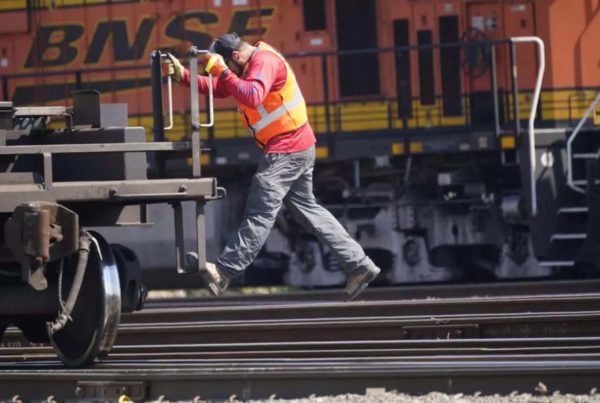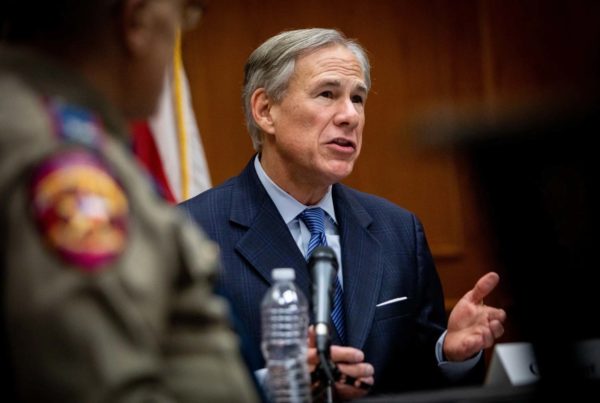Eight times a year, regional federal reserve banks around the country come together and release the Beige Book, a report that looks at the state of regional economic developments.
Unlike most economics reports, the Beige Book isn’t filled with statistics and wonky economic analysis. Instead, it takes a more qualitative and narrative look at economic developments.
Texas Standard reporter and producer Sean Saldana joined the show to break down what the Dallas Federal Reserve’s entry says about the Texas economy.
This transcript has been lightly edited for clarity.
Texas Standard: Tell me about some of the big things the Dallas Fed uncovered in this edition of the Beige Book.
Sean Saldana: Well, the Beige Book is a more informal look at the economy. But many of the observations and through lines in the book mirror a lot of the big developments that we’re seeing in the news cycle. For example, the biggest headline here is that the Texas labor market is incredibly strong.
And I guess to put that in context a little, every month since April 2020 – which was perhaps the most uncertain time of the pandemic – the unemployment rate in Texas has dropped. So right now, the unemployment rate in Texas is at 4%, which is pretty good. Before the pandemic, the unemployment rate in Texas was at 3.5%, and in some places like Austin, it was as low as 2.6%.
A tight labor market is generally associated with higher wages; if employers really need employees, they might have to pay more for them. Does the Beige Book touch on that at all?
Yeah, for sure. The Dallas Fed’s entry notes that there’s been a lot of turnover at low-skill positions. So this would be sort of the Amazon warehouse worker, the fast food employee, etc. So in order to attract workers, employers are having to pay more and in some cases even offer retention bonuses just to keep their employees. For example, last month, Dallas County approved a $40 million expenditure for retention bonuses where some employees were actually getting as much as $6,000 just to stay in their current roles. So we’re seeing this in a lot of places.
Another interesting aspect of the Beige Book is the retail section. What did you see there?
So retail has been a really interesting aspect of the economy, right? When people were at home ordering stuff on Amazon and Bed, Bath and Beyond, shortages became a big issue. This is when everyone started paying attention to “the supply chain” all of a sudden. Well, it turns out a lot of that has started to change direction. Retail sales have started to flatten out. Inventories have started to replenish.
And there are even reports of customers who’ve actually started to push back on higher prices. You can almost imagine somebody walking into a furniture store, taking a look at the price of a couch and being kind of annoyed. That storyline is happening all throughout Texas right now
Home prices have been extremely high, but we’re starting to see some signs of cooling in the housing market. What does the Beige Book have to say about housing trends?
Yes, so as you mentioned, home prices are somewhat starting to level off and in some cases dip, and that’s also reflected in the Dallas Fed’s entry. But what’s even more interesting is what it says about renters. Rent has gotten so high in so many places that on this very show we have literally done a segment about how to bargain with your landlord about yearly rent increases.
Well, so rents are still high. That’s not maybe the best news, but occupancy is down. And so rent is “declining from its feverish pace,” according to the Beige Book. And I will say it is also worth noting that not everything is trending in the right direction. The Dallas Fed notes that there’s also been an uptick in evictions and first-time homelessness. So a lot of separate developments in the Texas housing market right now.
Any other closing thoughts just about leafing through the Beige Book?
Yes, so if you pay attention to the world of media and politics, the word “recession” is getting thrown around a lot these days, which is understandable. People are seeing higher prices at the grocery store. They’re seeing GDP numbers and getting a little worried. But if you ask an economist, “are we in a recession?” they’re generally pretty cagey.
We actually got in touch with the Dallas Fed to see if they were interested in coming on the show to discuss the Beige Book, but we were politely but firmly told no. And the reason why is because they’re in a blackout period where they straight-up do not talk to the press. They have an important Federal Reserve meeting next week, and so they’re being very tight-lipped about what they could be discussing there – so this is the level of care economists and experts take around the big economic issues of the day.
And for a lot of people, that can be really frustrating, but I think the Beige Book does a really good job of explaining why they’re so careful. There isn’t just one thing happening in the economy. There are lots of things. Yes, inflation is high, but Texas is still adding tens of thousands of jobs a month. Wages are going up, but home prices are still way up. So a lot of things are happening. And I think the Beige Book does a really good job of adding that sort of nuance into how we think of the economy.















